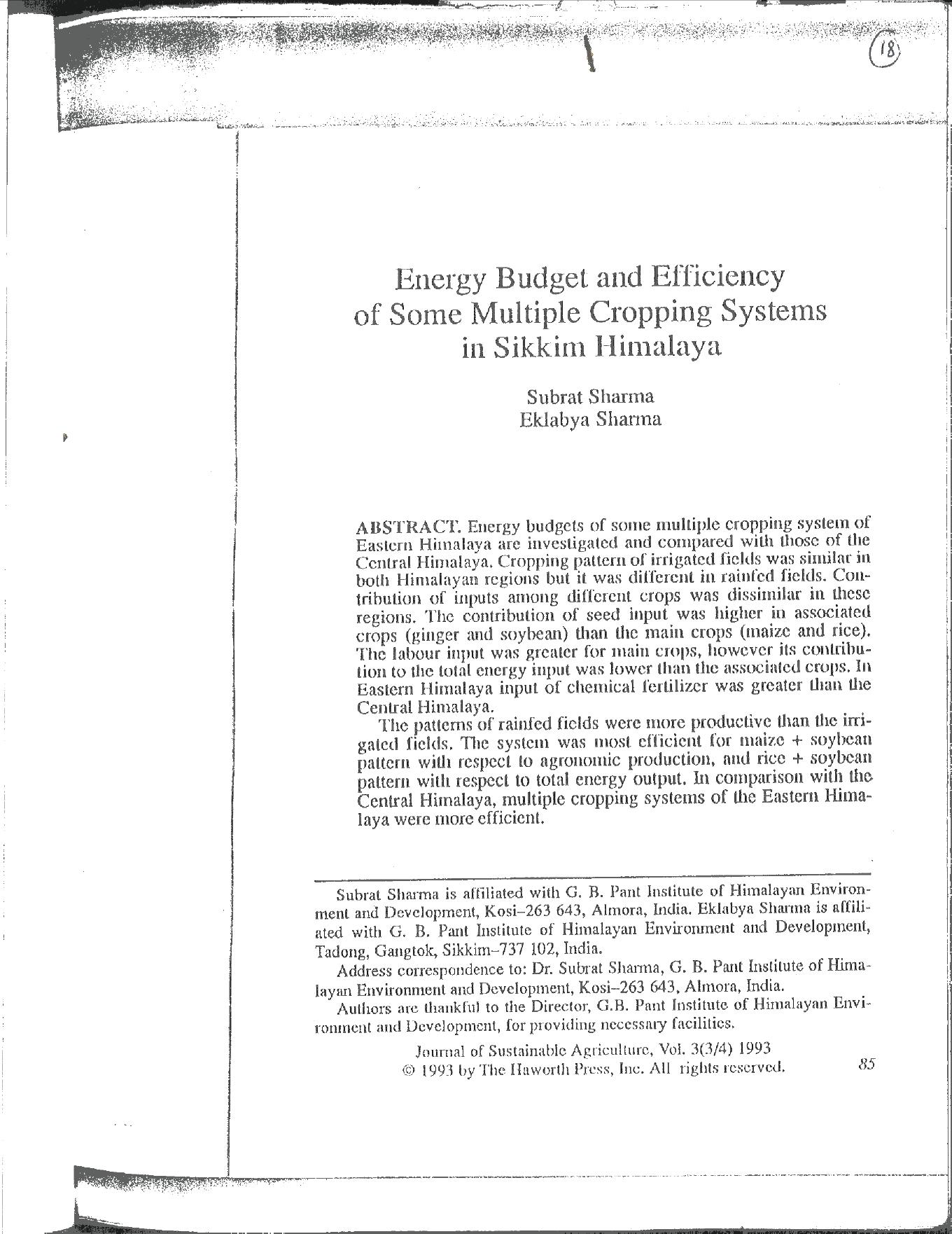Energy budgets of some multiple cropping system of Eastern Himalaya are investigated and compared with those of the Central Himalaya. Cropping pattern of irrigated fields was similar in both Himalayan regions but it was different in rainfed fields. Contribution of inputs among different crops was dissimilar in these regions. The contribution of seed input was higher in associated crops (ginger and soybean) than the main crops (maize and rice). The labour input was greater for main crops, however its contribution to the total energy input was lower than the associated crops. In Eastern Himalaya input of chemical fertilizer was greater than the Central Himalaya. The patterns of rainfed fields were more productive than the irrigated fields. The system was most efficient for maize + soybean pattem with respect to agronomic prod~cti0JL. and rice + soybean pattem with respect to total energy output. In comparison with the Central Himalaya, multiple cropping systems of the Eastern Himalaya were more efficient.
